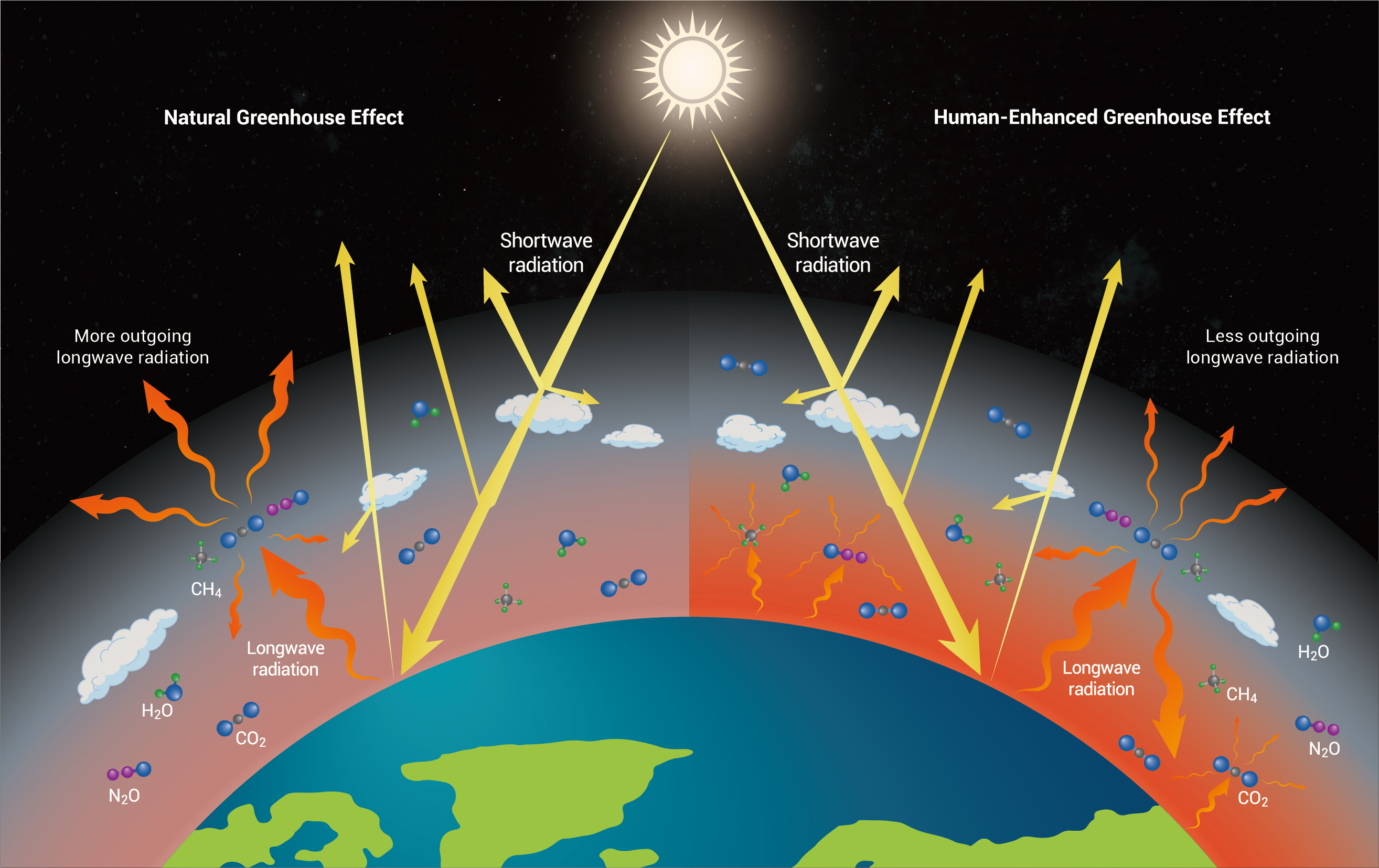Climate Risk Insurance Modelling for Australia’s Future – Oxford Economics

Analysis of Climate Risk Impact on the Australian Insurance Sector
A Report on Aligning Financial Regulation with the Sustainable Development Goals
Project Mandate: Integrating Climate Action and Economic Stability
Australian financial regulators identified a critical need for advanced analytical tools to evaluate the impact of climate-related risks on the national insurance sector. This initiative was driven by the necessity to understand the implications for insurance affordability and accessibility under various climate scenarios, directly supporting key United Nations Sustainable Development Goals (SDGs).
Addressing SDG 13 (Climate Action) and SDG 11 (Sustainable Cities and Communities)
The primary challenge was to develop a framework that could model the physical and transitional risks of climate change. This aligns with SDG 13 (Climate Action) by creating mechanisms to mitigate climate impacts and enhance adaptive capacity. Furthermore, by focusing on insurance affordability, the project directly addresses SDG 11 (Sustainable Cities and Communities), as accessible insurance is fundamental to building resilient and sustainable communities in the face of increasing climate perils.
Fostering SDG 8 (Decent Work and Economic Growth) through Enhanced Reporting
Stakeholder expectations for comprehensive Environmental, Social, and Governance (ESG) reporting, in line with standards such as the Australian Sustainability Reporting Standards (ASRS) and Global Reporting Initiative (GRI), demanded economic insights beyond generic disclosures. The project sought to ensure the long-term stability of the financial sector, a cornerstone of SDG 8 (Decent Work and Economic Growth), by providing regulators with the necessary data to safeguard economic resilience.
Methodological Framework and Scenario Analysis
To meet the regulatory requirements and SDG objectives, a detailed climate scenario analysis was undertaken. The core challenge was to create precise, geographically granular models grounded in recognised sustainability frameworks. This required a multi-disciplinary approach integrating climate science with economic forecasting.
Scenario Planning Aligned with Net-Zero Goals
The analysis was structured around two divergent climate scenarios to assess insurance sector vulnerabilities:
- Delayed Transition Scenario: Assumes a global transition to net-zero emissions beginning after 2030.
- Current Policies Scenario: Assumes no further climate mitigation policies are enacted beyond those currently in place.
This modelling provides a clear view of potential economic pathways, contributing to informed policy-making under SDG 13 (Climate Action).
Solution: Delivering SDG-Aligned Reporting Tools
Oxford Economics Australia developed a comprehensive solution that integrated macroeconomic modelling with sustainability reporting principles. This partnership between a public regulatory body and a private economic consultancy exemplifies SDG 17 (Partnerships for the Goals).
The key deliverables included:
- Macroeconomic Modelling: Projections across the two primary scenarios and a counterfactual baseline to measure impacts on Gross Value Added (GVA), inflation, and employment, supporting the objectives of SDG 8.
- Granular Income Projections: Household income forecasts were downscaled to the national, state, and Statistical Area Level 2 (SA2) regions, providing critical data for assessing community vulnerability and promoting SDG 11.
- Sector-Specific Impact Analysis: Detailed assessment of impacts on emissions-intensive industries, crucial for guiding a just transition and upholding SDG 12 (Responsible Consumption and Production).
- Integration with Sustainability Frameworks: The analysis utilized internationally recognised frameworks, including NGFS-aligned climate narratives and GRI-aligned reporting outputs, to promote corporate transparency and accountability in line with SDG 12.
Impact and Contribution to National and Global Sustainability Agendas
The project delivered significant outcomes for the Australian Prudential Regulation Authority (APRA) and the Council of Financial Regulators (CFR), enhancing their capacity to manage climate-related financial risks and contribute to the SDGs.
Enhanced Policymaking and Regulatory Alignment
- Informed Policy on Climate Risks: Provided robust evidence to shape policy regarding insurance affordability, directly contributing to national strategies for SDG 13 (Climate Action).
- Alignment with Global Standards: Enabled regulators and the insurance sector to align with global sustainability reporting standards (GRI, ASRS, SFDR), fostering transparency and supporting SDG 12.
- Strengthened Community Resilience: The granular, geographically relevant income data allows for a more accurate assessment of reinsurance likelihood and insurance accessibility for vulnerable communities, reinforcing the goals of SDG 11.
- Improved Stakeholder Transparency: Supported clear communication on climate risks and strategies, fulfilling disclosure requirements and building trust among stakeholders.
Analysis of Sustainable Development Goals (SDGs) in the Article
1. Which SDGs are addressed or connected to the issues highlighted in the article?
-
SDG 13: Climate Action
- The entire article is centered on addressing climate change. It discusses assessing “physical and transition climate risks,” developing “climate scenario analysis,” and aligning with “net zero goals.” The core challenge is to model the impact of climate change under different policy scenarios.
-
SDG 8: Decent Work and Economic Growth
- The article details the economic impacts of climate change, mentioning “macroeconomic modelling,” “economic forecasting,” and projections for “GVA, inflation, employment.” It also analyzes sector-specific impacts on industries like coal, livestock, and manufacturing, which are crucial for economic growth.
-
SDG 9: Industry, Innovation, and Infrastructure
- The focus is on the insurance sector, a critical component of financial infrastructure. The project aims to build resilience within this sector by providing “robust tools” and assessing “insurance sector vulnerabilities” to ensure its stability and affordability in the face of climate change.
-
SDG 11: Sustainable Cities and Communities
- The analysis is conducted at a highly localized level, using “geographically granular” data and “downscaled household income projections at… SA2 regional levels.” This helps in assessing climate risks and insurance affordability for specific communities, contributing to their resilience.
-
SDG 12: Responsible Consumption and Production
- A key theme is the push for corporate responsibility and transparency. The article repeatedly mentions the need to align with “GRI standards,” “ASRS,” and other “sustainability reporting standards,” encouraging companies to integrate climate and sustainability information into their reporting.
-
SDG 17: Partnerships for the Goals
- The project described is a multi-stakeholder partnership between public financial regulators (APRA & CFR) and a private entity (Oxford Economics Australia). This collaboration aims to share knowledge and expertise to address a complex global issue, aligning with the goal of fostering effective partnerships.
2. What specific targets under those SDGs can be identified based on the article’s content?
-
Under SDG 13 (Climate Action):
- Target 13.2: “Integrate climate change measures into national policies, strategies and planning.” The project directly supports this by providing Australian financial regulators with tools and data for “informed policymaking on climate risks.”
-
Under SDG 8 (Decent Work and Economic Growth):
- Target 8.1: “Sustain per capita economic growth…” The article’s focus on modeling “GVA, inflation, employment” under various climate scenarios is directly related to understanding and sustaining economic performance.
-
Under SDG 9 (Industry, Innovation, and Infrastructure):
- Target 9.1: “Develop quality, reliable, sustainable and resilient infrastructure… with a focus on affordable and equitable access for all.” The analysis of the insurance sector’s resilience and the assessment of “insurance affordability and accessibility” directly address making this financial infrastructure sustainable and accessible.
-
Under SDG 11 (Sustainable Cities and Communities):
- Target 11.b: “…increase the number of cities and human settlements adopting and implementing integrated policies and plans towards… mitigation and adaptation to climate change, disaster risk reduction…” The provision of “geographically relevant income data” at the “SA2 regional levels” enables local-level risk assessment and adaptation planning.
-
Under SDG 12 (Responsible Consumption and Production):
- Target 12.6: “Encourage companies… to adopt sustainable practices and to integrate sustainability information into their reporting cycle.” The project’s alignment with “GRI-aligned sustainability reporting,” “ASRS,” and “climate disclosure requirements” directly promotes this target.
-
Under SDG 17 (Partnerships for the Goals):
- Target 17.17: “Encourage and promote effective public, public-private and civil society partnerships…” The collaboration between the regulators (APRA & CFR) and Oxford Economics Australia is a clear example of a public-private partnership to achieve sustainability objectives.
3. Are there any indicators mentioned or implied in the article that can be used to measure progress towards the identified targets?
-
For Target 13.2:
- The development and implementation of “robust tools to assess how physical and transition climate risks… impact the insurance sector.” The use of these tools in “informed policymaking” is a direct indicator of progress.
-
For Target 8.1:
- The article explicitly mentions the use of projections for “GVA, inflation, employment” as key economic indicators to be modeled.
-
For Target 9.1:
- The assessment of “insurance affordability and accessibility” and the “likelihood of reinsurance” are specific indicators used to measure the resilience and accessibility of the insurance infrastructure.
-
For Target 11.b:
- The availability and use of “downscaled household income projections at… SA2 regional levels” serve as an indicator for the capacity for local-level climate adaptation planning.
-
For Target 12.6:
- The “alignment with global sustainability reporting standards (GRI, ASRS, SFDR)” is a key indicator of companies adopting sustainable practices and transparent reporting.
-
For Target 17.17:
- The successful delivery of the project, which provided “ESG Reporting Tools” and “informed policymaking” for the regulators (APRA & CFR), serves as an indicator of an effective partnership.
4. Summary Table of SDGs, Targets, and Indicators
| SDGs | Targets | Indicators |
|---|---|---|
| SDG 13: Climate Action | 13.2: Integrate climate change measures into national policies, strategies and planning. | Development and use of tools for assessing climate risks to inform policymaking. |
| SDG 8: Decent Work and Economic Growth | 8.1: Sustain per capita economic growth. | Projections of Gross Value Added (GVA), inflation, and employment. |
| SDG 9: Industry, Innovation, and Infrastructure | 9.1: Develop quality, reliable, sustainable and resilient infrastructure… with a focus on affordable and equitable access. | Assessment of insurance affordability, accessibility, and reinsurance likelihood. |
| SDG 11: Sustainable Cities and Communities | 11.b: Increase adoption of integrated policies and plans for climate change adaptation and disaster risk reduction. | Availability of geographically granular (SA2 regional level) income and risk data for local planning. |
| SDG 12: Responsible Consumption and Production | 12.6: Encourage companies to adopt sustainable practices and integrate sustainability information into their reporting cycle. | Alignment with sustainability reporting standards (GRI, ASRS, SFDR) and climate disclosure requirements. |
| SDG 17: Partnerships for the Goals | 17.17: Encourage and promote effective public-private partnerships. | The successful collaboration between public regulators (APRA & CFR) and a private firm (Oxford Economics Australia). |
Source: oxfordeconomics.com

What is Your Reaction?
 Like
0
Like
0
 Dislike
0
Dislike
0
 Love
0
Love
0
 Funny
0
Funny
0
 Angry
0
Angry
0
 Sad
0
Sad
0
 Wow
0
Wow
0












































































